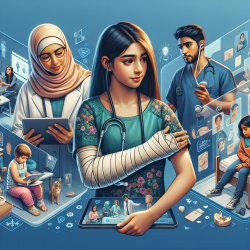Introduction
In the realm of caregiving for children with Osteogenesis Imperfecta (OI), a rare genetic condition characterized by fragile bones, caregivers face unique challenges. These challenges include limited access to information, social isolation, and the emotional toll of constant vigilance. However, a recent study published in the Journal of Medical Internet Research sheds light on how Internet-Based Technologies (IBTs) can be a game-changer for these caregivers.
Understanding the Role of IBTs
The study, titled Exploring the Views of Osteogenesis Imperfecta Caregivers on Internet-Based Technologies: Qualitative Descriptive Study, involved interviews with 18 caregivers. It revealed that IBTs are instrumental in facilitating daily caregiving activities, accessing medical information, and fostering social connections.
Key Findings
- Facilitating Daily Activities: Caregivers use IBTs to manage daily tasks, from scheduling medical appointments to providing distractions for children during painful periods.
- Accessing Medical Information: While caregivers prefer information from healthcare professionals, IBTs serve as a vital resource when experts are not accessible, particularly in remote areas.
- Social Networking: Social media platforms enable caregivers to connect with others facing similar challenges, offering a sense of community and shared knowledge.
Concerns and Recommendations
Despite the benefits, caregivers expressed concerns about the potential negative health effects of excessive screen time and the quality of online content. The study highlights the need for credible, high-quality resources tailored to the needs of OI caregivers.
Caregivers suggested several improvements, such as developing child-friendly IBTs, providing resources in multiple languages, and creating interactive platforms for quick responses to queries.
Implications for Practitioners
Practitioners can enhance their skills by incorporating these insights into their practice. By understanding the needs and concerns of OI caregivers, practitioners can recommend suitable IBTs and collaborate in developing new resources. Engaging with caregivers to co-create solutions ensures that IBTs are user-friendly and effective.
Conclusion
This study underscores the transformative potential of IBTs in supporting OI caregivers. By addressing caregivers' concerns and leveraging technology, we can improve the quality of care for children with OI and other rare conditions.
To read the original research paper, please follow this link: Exploring the Views of Osteogenesis Imperfecta Caregivers on Internet-Based Technologies: Qualitative Descriptive Study.










